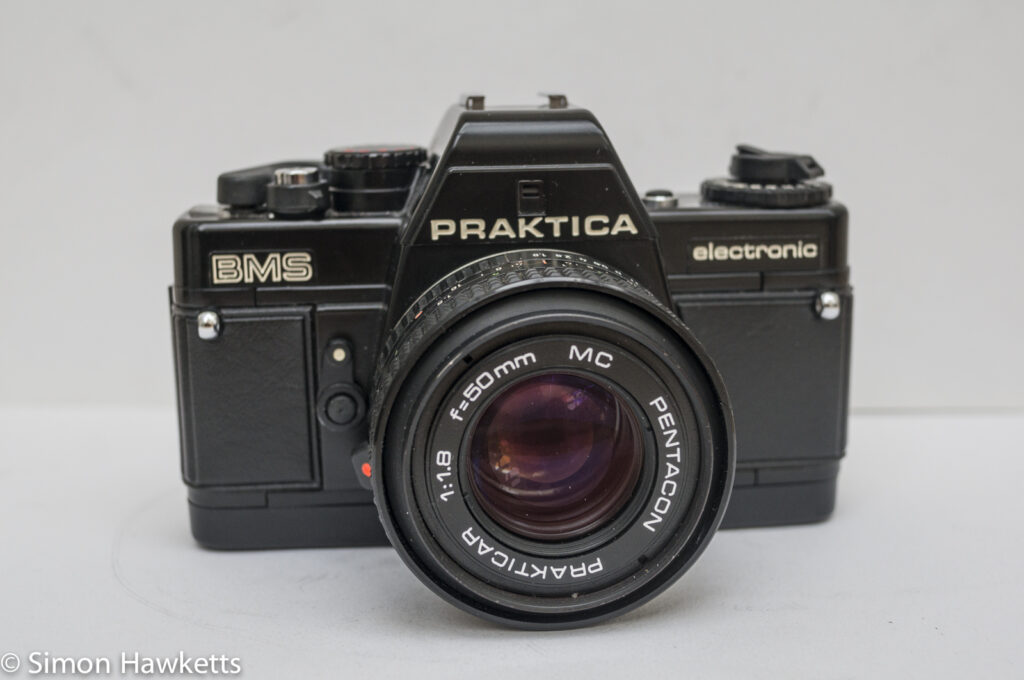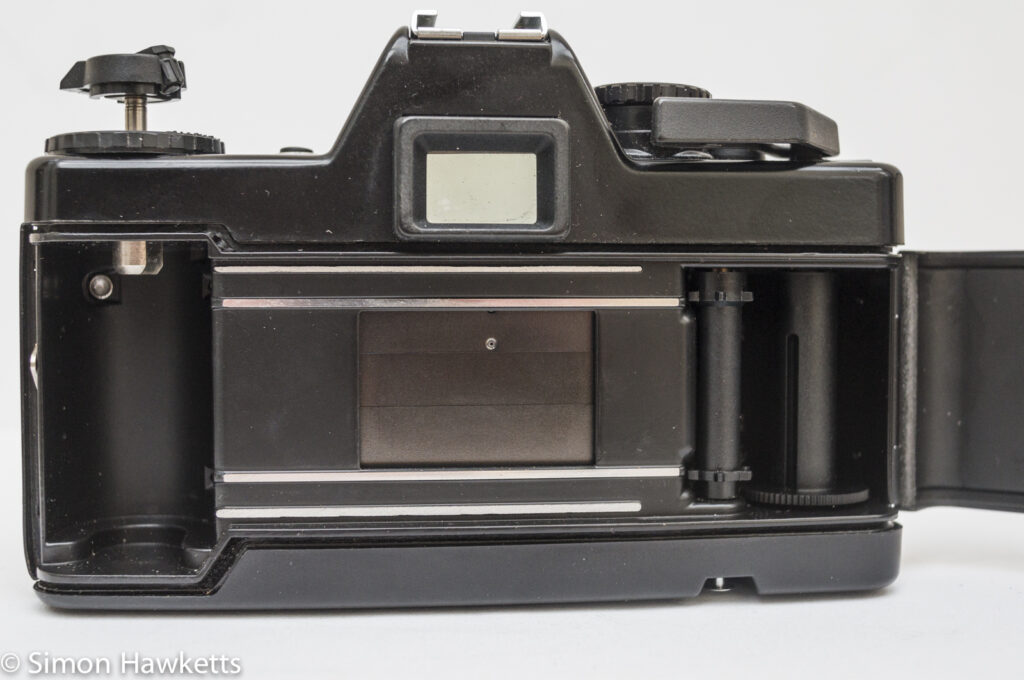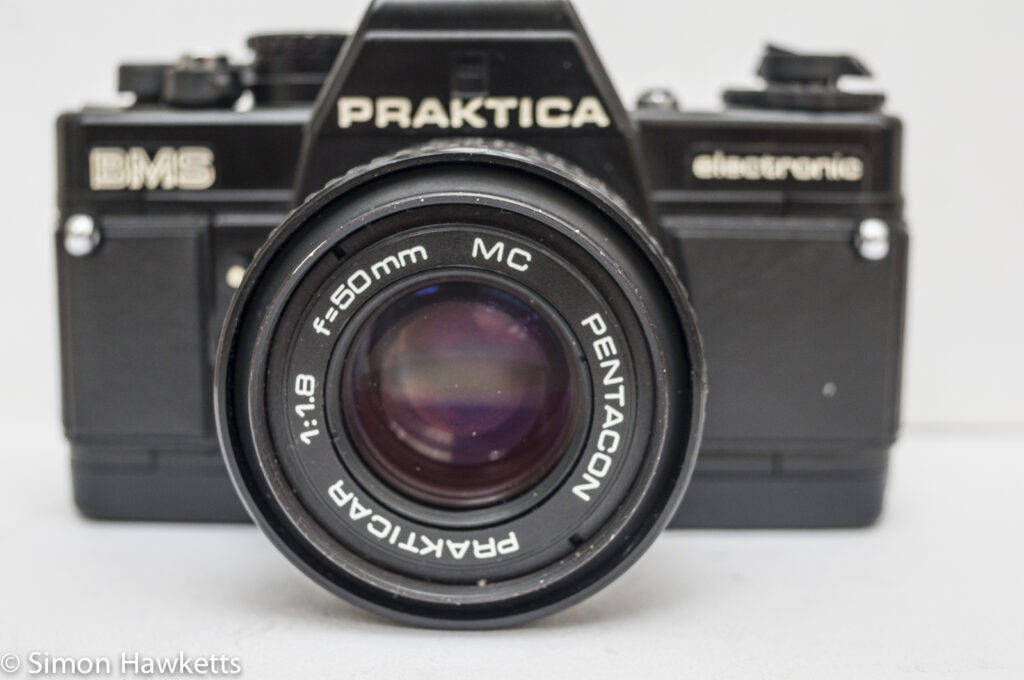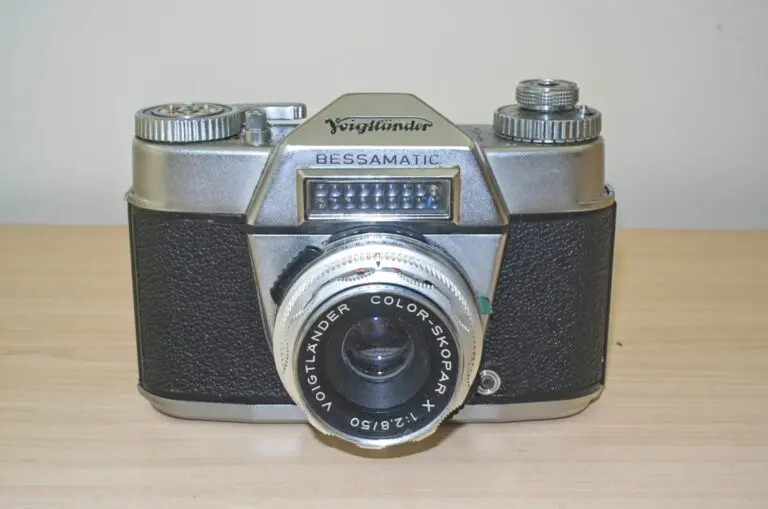The improved Praktica BMS 35 mm electronic camera
This Praktica BMS SLR camera is the sister of another Praktica camera in my collection that I posted about a while ago, the Praktica B100 electronic. Whereas the B100 was an attempt at a fully automatic camera, on the BMS the exposure is set completely manually.
My Praktica BMS Camera
I obtained this camera, as with most of my vintage camera collection, from eBay UK for a very reasonable sum of about £11 including postage and I bought it really to add to the Praktica B models that I have.
When it arrived, and I’d unpacked it, I found that it seems to be in just about perfect condition cosmetically with hardly a mark on it. It was supplied with a 50 mm f/1.8 Praktica PB bayonet mount lens, and because I also have a 28 mm wide angle and 135 mm portrait telephoto lens, I’ve included them in the pictures below.
Although unmarked cosmetically, there seems to be a problem with the in viewfinder exposure display information. The LEDs which show the shutter speed work, but the under exposure LED is always illuminated and the solid LED which shows the correct exposure is not illuminated at all.
This could be a fault with the camera, but since it is in such good condition cosmetically, I think it is probably the battery which needs replacing.
There is a battery check switch, but this doesn’t seem to do much at all – and the description of what it should do in the handbook is fairly confusing as well.
At some point I’ll buy a new battery to check it out, but in the meantime, the description below describes how the camera should work when it’s fully functional.
Pictures of the Praktica BMS














Praktica BMS Description
The BMS comes from a series of cameras from Praktica that were improved, certainly more attractive and better specified than the earlier, more bulky and clunky models. The number of models in the range was also cut down to a much more realistic number than the seemingly endless number of different models made in the mid 1960s.
It’s a reasonably heavy camera to carry about, as was its sister automatic version, the B100, indicating it is made in the same way using probably the same solid components. Certainly the lens mount is metal, and the whole camera feels well-made and comfortable to use because of the nicely padded covering.
Exposure measurement
Setting the correct exposure is made by way of matching a flashing LED in the viewfinder with a solidly lit LED. The LED’s line up against a list of shutter speeds which the camera can be set to, so it’s possible to determine if the camera can be hand held or needs to be on a tripod. There are also under and over exposure markings which show the photographer when to shift the aperture if necessary.
This is in effect match needle metering, with the solid LED being the measured value and the flashing LED being the camera setting, and therefore can be used to set either parameter to get the exposure correct. These days I always think of the ‘exposure triangle’ and include the ISO, but of course with film one part of the triangle is fixed – the film speed – so this system allows you to adjust either shutter speed or aperture to get the correct exposure.
Talking of film speed, on the BMS this is set with a dial around the film rewind knob. The dial is lifted and then can be set to match the film loaded in the camera, between 12 and 3200 ISO.
Within the viewfinder, it is possible to see both of those parameters because of a neat little trick to allow the aperture to be viewed. The front of the prism housing has a small window in which shows the aperture the lens is set to in a small viewport at the bottom of the viewfinder.
The light cell is fitted under the mirror in this camera, and that is in common with several cameras of a similar vintage. My Miranda Sensomat does the same thing, and the Topcon RE Auto has a very sophisticated pattern of light measuring cells.
Viewfinder
As well as the aforementioned shutter speeds in the viewfinder and the aperture setting, there is the usual 45deg split image focus assist in the centre of the viewfinder. I say usual, because a lot of the Praktica cameras had this arrangement, and it’s a good idea because it works with most subjects in both portrait and landscape mode. There is also a micro-prism circle and the normal ground glass screen surrounding it.
Lenses
The Pentacon lenses which I have for use with this camera are nice looking lenses with good levels of multi-coating.
In one way it’s a bit of a shame that Praktica didn’t use the Pentax K mount for their cameras because it would make it much easier to try them on my Sony NEX 6 as I own a K mount adapter.
It would probably have helped the Praktica brand as well, because there were almost certainly more 3rd party manufacturers of K mount lenses than Praktica bayonet mount lenses, so they would probably have sold more bodies.
However, it is probably the fact that they are a more obscure mount which makes them so cheap to buy. I think the 135 mm lens cost me £2 and the 28 mm was about £5. I might invest in a PB to NEX adapter to give them a work-out.
All the lenses are 6 blade apertures, and feature auto stop down and electronic contacts to communicate the aperture.
Praktica BMS Specifications
- Praktica BMS 35 mm SLR
- Introduced about 1984
- Match LED metering system
- Shutter speeds 4 sec to 1/1000 sec + B
- Shutter release lock
- ISO 12 to 3200
- Self-timer
- Powered by a single PX28L 6v battery
- Praktica PB bayonet mount
- Serial No 0215305
- 50 mm f/1.8 serial no 8101430
- 28 mm f/2.8 serial no 1050486
- 135 mm f/2.8 serial no 1013452
- Manual available on line here
Discover more from Everything Vintage
Subscribe to get the latest posts sent to your email.





